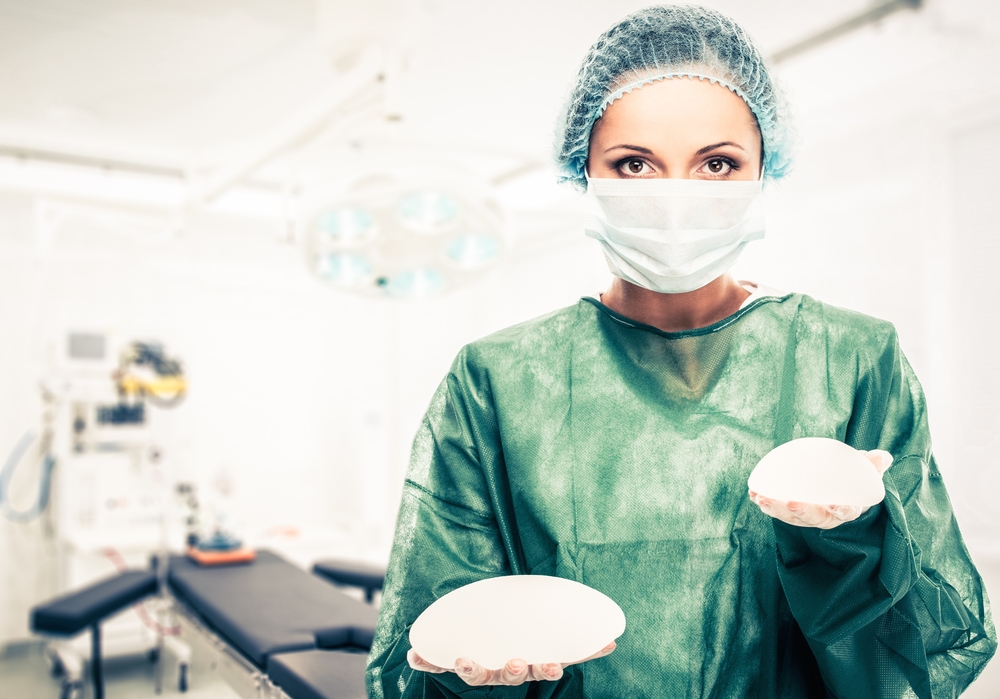Fly In For Surgery
Live far away? Contact us today to learn about lodging arrangements for out of town patients.
LEARN MORE
Posted on August 4, 2015 in Breast Augmentation
Breast implant capsular contracture remains a hot topic within plastic surgery. Any time a foreign body is implanted in the human body, it will become encapsulated and walled off during the normal healing response. As this scar tissue forms around a breast implant, it ranges in terms of severity from a soft, natural feeling implant to a severe contracture causing pain, distortion of the implant, and significant firmness. Breast implant capsular contracture is one of the most common reasons that patients consider breast implant revision.
There are many theories regarding why breast implant capsular contracture forms. Some speculate it may be related to migration of silicone molecules across the implant shell, reaction to the foreign body, or that some patients may be genetically predisposed to this healing response. Other studies suggest it may be related to contamination of the implant, potentially during the surgery or at any time during mild sickness or even following a minor dental procedure. Capsular contracture following breast augmentation may also be related to a mild (subclinical) infection or bleeding during early healing. Some research studies show that it may also be related to characteristics of the breast implants, either surface texture or where they are placed (either above or below the pectoralis – chest – muscle).
Reported rates of breast implant capsular contracture vary. Some studies suggest it may develop in up to 20% of augmented patients. For implants placed above the pectoralis muscle, rates may be higher for silicone vs. saline implants. Texturizing of the implant however may help to lower this risk. Textured subglandular implants have shown lower rates of capsular contracture than smooth subglandular implants. The risk also appears lower for implants placed below the pectoralis muscle (submuscular), smaller implants less than 350cc, and when no drain is required.
It is interesting to consider why breast implant capsular contracture rates may be lower for submuscular implants. This may be related to overlying muscle movement or potentially that the muscle provides a barrier to bacterial contamination since muscle has an excellent blood supply. The additional muscle and soft tissue coverage may also mask the capsule and make it less apparent.
So, since we know that there are many potential causes of capsular contracture and that it is one of the most common long-term complications of breast augmentation, how can it be treated?
Well, most importantly there are several measures taken during surgery to lower the risk of breast implant capsular contracture. A dose of IV antibiotics is given an hour before surgery and one additional dose before discharge home. This may reduce the risk of subclinical infection and implant contamination. Implants are meticulously handled in the operating room as well. Dr. Power is the only one who actually touches the breast implant. Her gloves are changed before placing the implant on both sides to minimize the risk of even a small particle of the surgical gauze from contacting the implant. The implant is also washed with a solution of three antibiotics based on plastic surgery research in the field. This lowers the risk of contamination and infection following implant placement. Following surgery, implant massage may also be beneficial and will be discussed during detailed post-operative instructions. It is less important to perform massage of submuscular implants, since the implants are under constant movement from the pectoralis muscle.
If breast implant capsular contracture develops, what are surgical options for correction?
Older techniques used to recommend closed capsulotomy, which attempted to release the scar tissue without opening the skin. This is no longer practiced because of high risk of implant deflation.
The tight capsule may either be released (referred to as “capsulotomy”) or removed (“capsulectomy”). Capsulotomy remains the most common technique to address breast implant capsular contracture, which allows repositioning of the implant and often replacement with a new implant during the same procedure to lower risk of recurrence. There are generally fewer risks of releasing the scar tissue as opposed to removing it.
In certain cases, capsulectomy may be recommended; for example, if the capsule is heavily calcified, if removing a ruptured silicone implant with contamination of the pocket, if the pocket is grossly infected, or if the contracture is quite severe. If the implant is being placed in a different plane to address aesthetic concerns, capsulectomy may also be recommended. There may be higher risk of bleeding following capsulectomy vs. capsulotomy.
Recommendations based on your specific presentation and concerns will be made when discussing correction of breast implant capsular contracture. Please contact us to schedule your consultation with Dr. Power.
While pregnancy and breastfeeding are exciting experiences in life, they can also change the look and feel of breasts. Many
LEARN MOREFor patients who have decided to undergo a breast procedure, it is important to understand what to expect during the
LEARN MOREA breast lift, also known as mastopexy, is performed to raise the breasts through the removal of excess skin and
LEARN MOREFill out the form below to schedule your consultation today.
Live far away? Contact us today to learn about lodging arrangements for out of town patients.
LEARN MOREWant to hear more from Dr. Power? Check out our blog for monthly updates and procedure information.
LEARN MOREWe are transparent about pricing. Just let us know which procedure you are interested in and we will give you a range!
LEARN MOREyou may learn more and book your elective
plastic surgery online. Click here to book a
time that is convenient for your busy schedule.
If you have further questions before booking,
please submit our intake form.